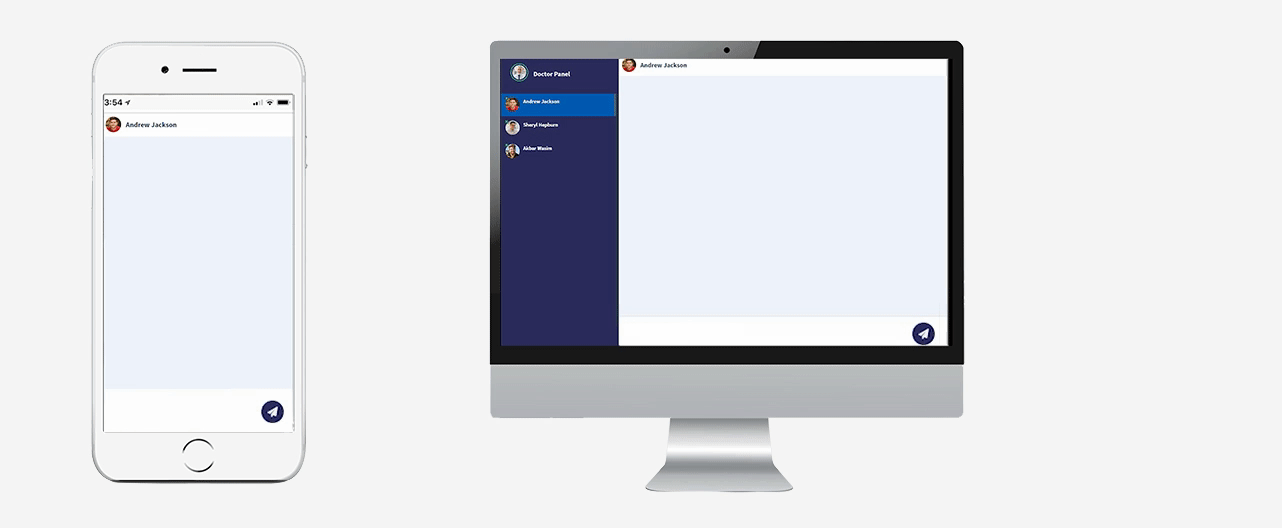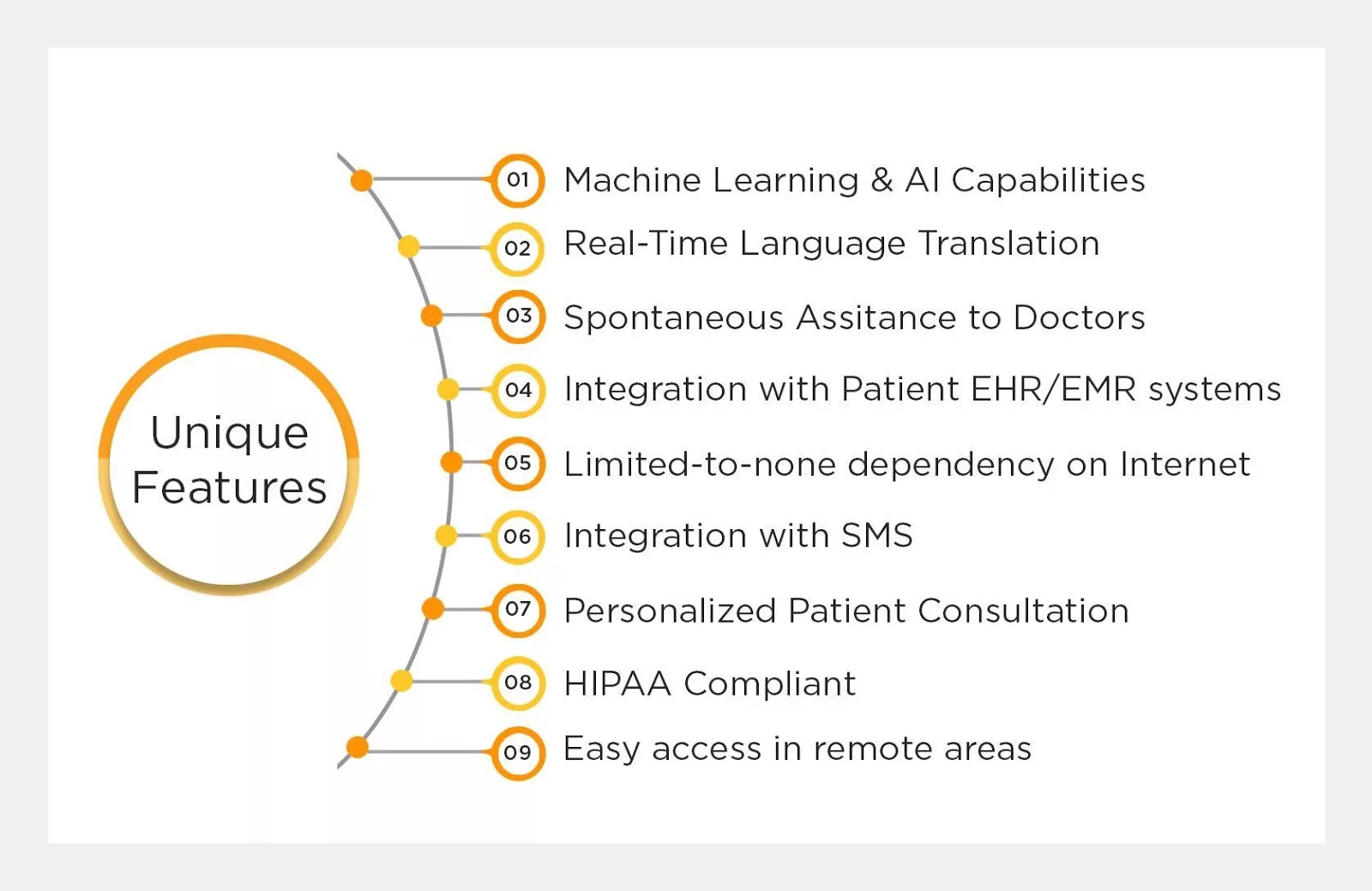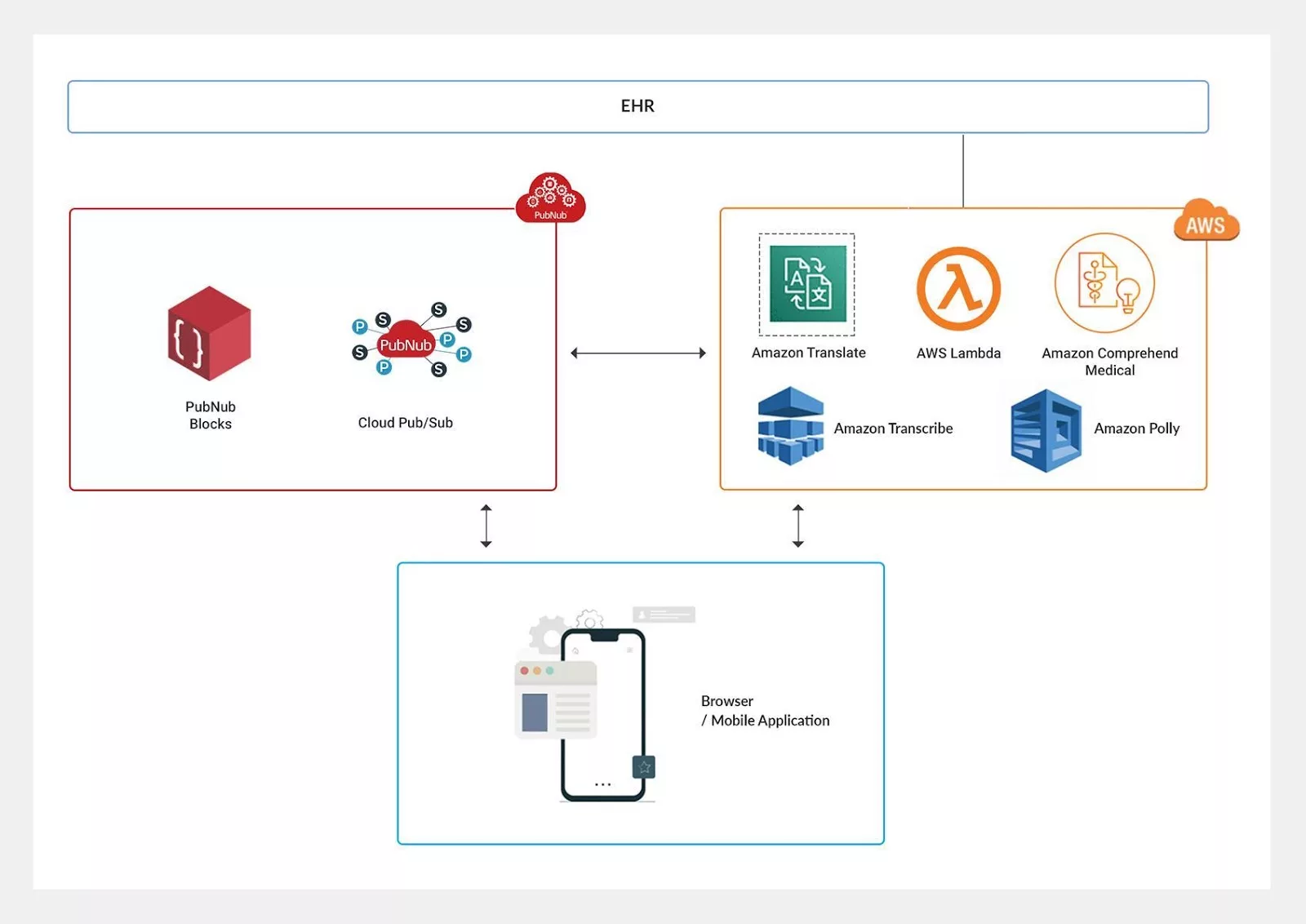
The Healthcare industry is at an inflection point given the global shortage of doctors/nurses combined with the profound impact of real-time & machine learning services. The impact these could have on the entire continuum-of-care delivery ecosystem, especially telemedicine, is slowly changing. This change is fuelled by a race to own a greater portion of the healthcare delivery channel, acquire data, and move closer to the consumer.
In this race, telemedicine leads the way. Telemedicine is a technological advancement that allows healthcare professionals (HCP) to evaluate, detect, diagnose, and treat patients at a distance using digital communication technology. Telemedicine, or a digital continuum of care, promotes healthier patients, advancing focused doctor-patient interactions, and securely integrates with electronic health records (EHR). For patients, the option of primary healthcare at their mobile screens and for doctors, screening patient history, and effective diagnosis is a true testimony of telemedicine’s success. This strategic approach has evolved drastically in the last decade as telemedicine has become an increasingly important part of the healthcare ecosystem, including vast adoption in the Americas.
SF Medic weaves cognitive computing in its veins to provide smart & language-independent assistance to doctors and personalized health consultation for patients. SF Medic learns through the patient’s history while providing enhanced security & compliance of the patient’s health records. It enables remote consultations with healthcare professionals, including doctor-patient chat, interoperability with electronic healthcare records, and overcoming human language barriers.
At SourceFuse, we believe technology acts as the accelerator of momentum, not the creator of it. Our approach to telemedicine is empowerment to strengthen the provider’s knowledge, understand the patient’s comfort zone, and facilitate ease for caregivers. To unite these together, we leveraged artificial intelligence (AI) & natural language processing (NLP) services, real-time messaging, and most importantly, regulated infrastructure to protect patient data.
Product Overview
SF Medic uses machine learning services and data streaming technologies to enable doctor-patient text-(or asynchronous voice)-based interaction anywhere across the globe. It learns about a patient’s medications, allergies, and past records from an EHR integration and provides real-time clinical decision support interventions. This unique feature empowers the doctor with stronger and safer prescriptions, minimizing the chances of human error. It provides spontaneous language translations and the real-time messaging feature further enhances the doctor-patient interaction experience.
Over the years, SourceFuse has built many HIPAA compliant healthcare applications. Even with SF Medic, we used the expertise and experience of our architects to build the same tight security controls that are expected of any HIPAA compliant application. Moreover, each cloud service that powers SF Medic is self-certified to be HIPAA compliant and SF Medic itself implements all the authentication, authorization, and encryption requirements needed to be a fully HIPAA compliant product.
SF Medic in Action
Once a patient has booked an appointment with their doctor, they start a private text- (or asynchronous voice) -based interaction with the provider directly. Security & data privacy is at the core of SF Medic, creating a dedicated chat room for each doctor-patient interaction.
Being true to its capabilities, SF Medic overcomes all language barriers and upon integration with the patient data records, assists the doctors with real-time interventions if it senses that the prescription conflicts with the patient’s medical history.

SF Medic advances the Journey to Innovation
The idea of telemedicine was to provide primary healthcare services to patients through a remote-based facility. This was a major breakthrough as patients struggled to access hospitals due to distance, commute, and financial constraints. However, telemedicine applications were heavily dependent on technology like connectivity issues, heavy bandwidth requirements, access to the internet, technology costs, and (lack of) tech-savviness of the user. As per Vaidant’s real-world telemedicine experience in India, 7 out of the 10 telemedicine consultations failed in simply establishing a connection between the doctor and the patient. Of the remaining three, two telemedicine consultations faced unsteady connections resulting in poor adherence to physician recommendations. Even when the applications worked on low data bandwidth, the results were not promising.
Learning from the advances made, we felt the need to remove the use of video in telemedicine consultation sessions because the delivery model has operational and scalability challenges at the cost of that can impact patient care in remote areas patient health. To mitigate these challenges, SF Medic was made to work in a lite mode with slow internet connection speeds only supporting real-time text interactions. Moreover, SF Medic supports the features of patient data lookup and language translation even through SMS, delimiting the requirement of a steady Internet connection. This made SF Medic not just battle connectivity issues but also age and geography limitations, on top of its language-independent feature.
To accommodate for physical disabilities, literacy concerns, and vision-impaired patients, we added voice features in SF Medic. This way, patients could use simple and short voice recordings to talk to their caregivers or medical providers. Patients can record small voice snippets and send them to the doctor. Using Amazon Transcribe, these voice snippets are converted and sent as a text to the doctor (along with SF Medic’s native features of translation and medical intervention). Once the doctor receives the translated text, he/she can send a reply – SF Medic not only shows the translated text to the patient but also allows them to listen to the translated text using Amazon Polly (AWS’s text to speech service), with a click of a button. So, now the patients have full-duplex text to speech and speech to text capabilities to easily communicate with doctors overcoming literacy, disabilities, and language barriers.

Deploying SF Medic
SourceFuse offers SF Medic as a standalone SaaS (Software-as-a-Service) solution for hospitals and specialty clinics. SF Medic is also available as a plugin that integrates into existing hospital management systems and EHRs.
The Tech Stack
Amazon Web Services (AWS) Cloud and PubNub are the primary technologies used by SF Medic. PubNub is a real-time data streaming service that can deliver messages over the Internet between two applications. PubNub has data-centers across the world. It uses these data-centers to guarantee a quarter of a second latency for chat messages between the Doctor and patient. Moreover, PubNub is also a HIPAA compliant service. These features make PubNub an ideal choice for building the communication backbone for SF Medic.

Bot’s AI capabilities. There are four services of AWS that are leveraged by SF Medic, namely the Amazon Comprehend Medical and Amazon Translate.
- Amazon Comprehend Medical: It is an NLP engine that can detect tonal and contextual features of text. Amazon Comprehend Medical can be used to identify medical terminology in text. SF Medic uses Comprehend Medical to extract medical terms from text messages. Extracted terms are processed and made ready for the Doctor’s reference.
- Amazon Translate: It is a neural language translation service. Its neural translation uses deep learning models to deliver more accurate and more natural-sounding translation than traditional statistical and rule-based translation algorithms.
- Amazon Transcribe Medical: Amazon Transcribe makes it easy for developers to add speech-to-text capability to their applications. Amazon Transcribe uses a deep learning process called automatic speech recognition (ASR) to convert speech to text quickly and accurately.
- Amazon Polly: Amazon Polly is a service that turns text into lifelike speech, allowing you to create applications that talk, and build entirely new categories of speech-enabled products.
SF Medic processes all doctor-patient interactions through PubNub channels. The interactions then move on to Amazon Comprehend and Amazon Translate Services. PubNub acts as a serverless processing engine for transporting all chat messages and transforming them into actionable commands.
In the case of SF Medic, these actionable commands can trigger Clinical Decision Support interventions like:
- Alerting the doctor and patient if the Doctor recommends a drug that the patient has a known allergy.
- Alerting the doctor and patient if the Doctor recommends a drug that has a known contraindication to a drug that patient is on.
In the future, this same concept can be extrapolated to make interventions for Lab test results or known food allergies for patient nutritionist interactions.
We believe cognitively aware tools like SF Medic can greatly impact the way care is delivered to patients. Not only does the language translation feature improve the accessibility of primary healthcare for the patients, but the real-time interventions also ensure that the care delivery process is frictionless for the provider and above all safe for the patient.
Conclusion
Traditional telemedicine has tremendous potential to improve the continuum-of-care cycle by improving the quality of life, process efficiency, and cost-effectiveness of healthcare services. It is especially beneficial for underserved communities in rural or remote areas. However, is limited by the dependency on technology and high bandwidth internet which reduces the success probability by a big margin.
Telemedicine focused too much on being a technology solution rather than a technology-driven solution. The true benefits of telemedicine can be achieved only when we improve the quality of a doctor’s precious time utilization and comfort a patient with secured, quality-driven, personalized healthcare services.
SF Medic is an innovative solution to the real-world problems of traditional telemedicine. We envision a future where our telemedicine innovation – SF Medic will provide quality of life to both, doctors and patients equally.